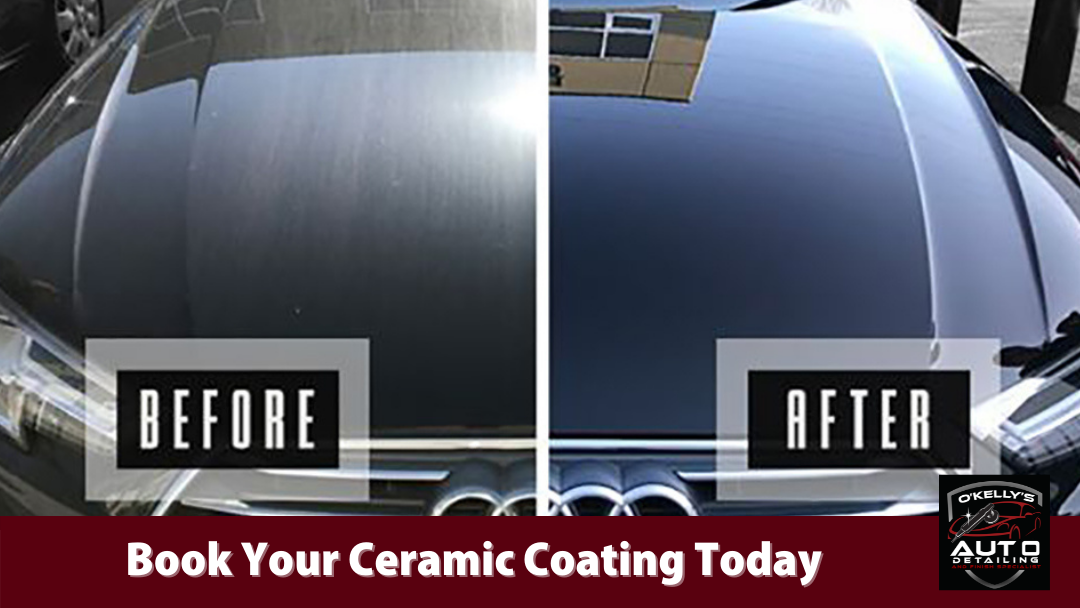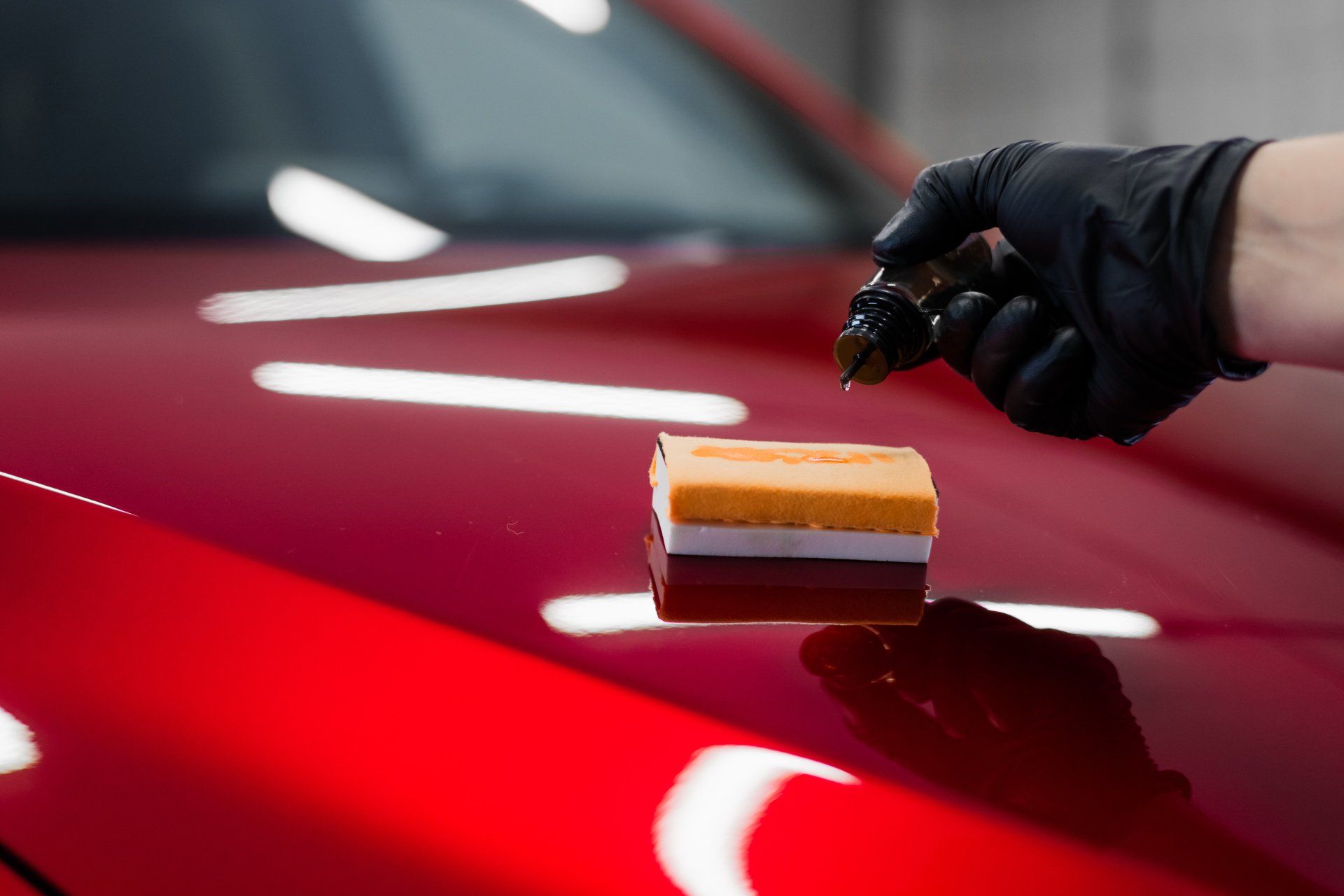Final Touch Auto Works Ceramic Coatings Application Checklist for DIY Enthusiasts
Final Touch Auto Works Ceramic Coatings Application Checklist for DIY Enthusiasts
Blog Article
The Ultimate Guide to Ceramic Coatings: Enhancing Your Automobile's Complete and Sturdiness
If you're aiming to boost your auto's look and security, ceramic finishes may be the remedy you've been looking for. These innovative finishings bond with your car's paint, developing a long lasting barrier versus ecological damage. However just how do they compare to standard wax? Understanding the benefits and application process can make a significant difference in your car care regimen. Allow's discover what makes ceramic finishes a rewarding financial investment for your automobile.
What Are Ceramic Coatings?
Ceramic finishes are sophisticated protective layers that improve your car's outside. They're made from a liquid polymer that chemically bonds with your lorry's paint, developing a long lasting shield. Unlike conventional wax or sealants, which diminish with time, ceramic finishes give durable security against ecological pollutants like UV rays, dirt, and chemicals.When you use a ceramic finish, you're spending in an obstacle that repels water, making it less complicated to cleanse your automobile and keeping it looking more recent for longer. This innovation helps protect the honesty of your paint, reducing the risk of scratches and oxidation.Ceramic finishings been available in numerous solutions, each created to deal with different needs and preferences. You can choose a DIY kit or select expert application, relying on your comfort degree and budget plan. On the whole, ceramic finishes represent an innovative remedy for preserving your lorry's aesthetic allure and longevity.
Benefits of Ceramic Coatings
When you buy a ceramic finish, you reveal a series of advantages that surpass mere looks. To start with, it gives extraordinary defense against ecological pollutants like dust, bird droppings, and UV rays, maintaining your vehicle's paint looking new longer. You'll see that maintenance becomes much easier, as the hydrophobic homes create water and crud to glide off effortlessly. This indicates less time spent washing and describing your vehicle.Additionally, ceramic coatings can enhance the glossiness of your auto's coating, providing it that display room luster. They additionally use resistance to scrapes and swirl marks, which helps maintain your car's resale value. With a ceramic coating, you're not just safeguarding your financial investment; you're additionally enhancing its overall appearance and durability. Eventually, this advanced modern technology guarantees your cars and truck sticks out while enjoying long-term benefits that conventional waxes simply can not match.
The Application Process: Exactly How to Apply Ceramic Coatings
Applying a ceramic covering involves numerous essential steps to ensure ideal results. Initially, extensively clean your cars and truck to eliminate any type of dirt, gunk, or contaminants. This assures the surface area is tidy and all set for the covering. Next off, sanitize the paint using a clay bar to remove ingrained bits. Later, evaluate the paint for imperfections and polish it to attain a smooth surface.Once your vehicle's surface area is prepped, apply the ceramic coating in tiny sections. Use an applicator pad to spread out the finish evenly, adhering to the maker's instructions. Enable the layer to treat for the recommended time, typically in between one to two hours, depending on the product.Finally, stay clear of washing your cars and truck for at least a week to allow the finishing bond effectively. Complying with these actions will aid you achieve a resilient, high-gloss coating that protects your auto for many years ahead.

Comparing Ceramic Coatings to Traditional Wax
After guaranteeing your cars and truck's surface is perfectly prepped with a ceramic coating, it's time to consider just how this modern option compares to typical wax. Ceramic finishes offer a robust layer of security that lasts for years, while wax normally uses just a couple of weeks of luster. You'll observe that ceramic finishes bond with your paint, developing a hydrophobic surface that fends off water and dust, making maintenance easier.In comparison, conventional wax sits on top of the paint and needs constant reapplication. With ceramic coatings, you get exceptional scratch resistance and UV security, assisting to stop fading and oxidation. While the first investment for a ceramic finish is greater, the long-lasting benefits typically exceed the prices. If you're looking for longevity and boosted gloss, ceramic layers are a clever option over traditional wax.
Maintenance Tips for Your Ceramic Coated Vehicle
To keep your ceramic-coated vehicle looking immaculate, normal maintenance is essential. Beginning with a gentle clean utilizing a pH-balanced hair shampoo; avoid extreme detergents that can degrade the layer. Utilize a microfiber laundry mitt to stop scratches and constantly rinse completely to get rid of any kind of soap residue.After cleaning, completely dry your car with a soft microfiber towel to avoid water spots. Take into consideration using a ceramic maintenance spray every couple of months to improve the covering's hydrophobic residential properties and include an extra layer of protection.It's also wise he has a good point to stay clear of automated auto cleans with unpleasant brushes, as they can harm the layer. Rather, decide for hand cleans or touchless laundry choices. Furthermore, consistently evaluate your lorry for impurities like tree sap or bird droppings and resolve them without delay to avoid etching. Complying with these suggestions will certainly help maintain the shine and resilience of your ceramic-coated car for years to find.
Typical Myths Regarding Ceramic Coatings
Regardless of the impressive benefits of ceramic coverings, several myths can develop complication for automobile proprietors. One common false impression is that ceramic layers get rid of check that the demand for upkeep. While they do offer improved defense, normal washing and care are still vital to keep that high-gloss finish.Another myth is that these coverings are scratch-proof. While they supply a solid layer of protection versus minor scratches, they can't endure severe influences or unpleasant materials.Many additionally believe that ceramic coverings will make their cars and trucks unsusceptible to all contaminants. Actually, they ward off dust and water yet will not protect against problems like bird droppings or tree sap from causing damage if left unattended.Lastly, some think that applying ceramic coverings is a DIY job anyone can manage, yet achieving a remarkable application often needs specialist know-how to assure peak results.
Selecting the Right Porcelain Layer for Your Vehicle
Exactly how do you select the right ceramic layer for your automobile? Begin by thinking about the level of defense you need. If your auto faces rough weather condition or frequent road trips, go with a high-end coating that offers premium longevity and resistance to scratches, UV rays, and chemical stains.Next, consider the application approach. Some coverings call for professional installment, while others are DIY-friendly. If you're experienced, a do it yourself product could conserve you money, but also for the very best outcomes, a professional can ensure proper application.Don' t neglect to inspect the longevity of the layer. Some last a few years, while others can safeguard for a decade or even more. Read reviews and testimonials to gauge individual contentment. By weighing these elements, you'll locate a ceramic coating that not only improves your car's appearance but additionally provides lasting security.
Often Asked Inquiries
The Length Of Time Do Ceramic Coatings Last on Ordinary?
Ceramic layers commonly last anywhere from 2 to five years, depending on elements like application, maintenance, and ecological problems. You'll wish to comply with correct care regimens to optimize their longevity and efficiency.
Can Porcelain Coatings Be Applied Over Paint Scratches?
You can't use ceramic finishings over paint scratches successfully. It's finest to fix any type of scrapes initially, guaranteeing a smooth surface area - Final Touch Auto Works Ceramic Coatings. By doing this, the covering bonds appropriately and provides perfect defense for your vehicle's finish
Are Ceramic Coatings Safe for All Car Surfaces?
Ceramic finishes are generally safe for a lot of auto surfaces, including paint, glass, and wheels. Nevertheless, it is critical to check specific item standards, as some layers might not be suitable for sure products or coatings.

Will Porcelain Coatings Protect Against UV Damages?

Can I Do Touch-Ups on Ceramic Layered Surfaces?
You can do touch-ups on ceramic coated surfaces, yet it's essential to make use of compatible products. Validate the area is clean and adhere to proper application methods to preserve the covering's honesty and performance. Unlike typical wax or sealants, which put on off over time, ceramic coverings provide resilient protection versus environmental pollutants like UV rays, dust, and chemicals.When you use a ceramic covering, you're investing in an obstacle that repels water, making it simpler to cleanse your car and keeping it looking newer for longer (Final Touch Auto Works Ceramic Coatings). Later, evaluate the paint for imperfections and polish it to attain a smooth surface.Once your car's surface is prepped, apply the ceramic finish in tiny areas. Permit the covering to heal for the advised time, typically between one to 2 hours, depending on the product.Finally, avoid washing your vehicle for at least a week to let the covering bond correctly. Consider using a ceramic maintenance spray every couple of months to enhance the covering's hydrophobic buildings and include an added layer of protection.It's additionally sensible to avoid automated auto cleans with abrasive brushes, as they can harm the layer. Ceramic finishings are usually safe for the majority of car surface areas, consisting of paint, glass, and wheels
Report this page